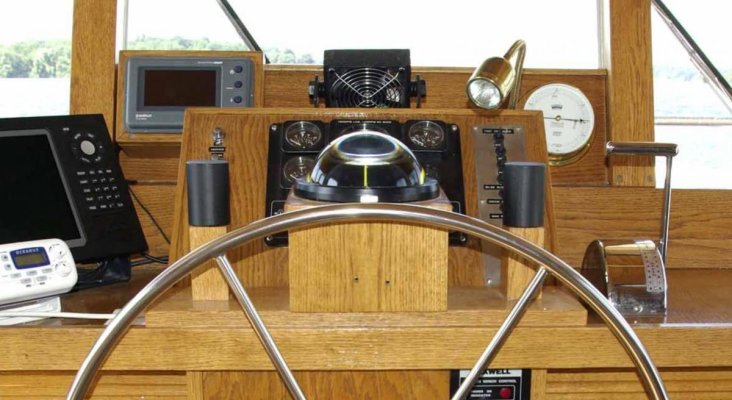Eric, Sorry, normally an email is given telling me that you or others have posted. May have missed it. I am impressed. Surprised that Eric (Manyboats) has not responded and in a positive mode. That there is no ballast is surprising watching the video. As you are aware, our boat has 1500# built into the keel and I have added 1400# and a heaver engine (500# additional) to settle it down. I think that I am close to your stability and motion now. I understand the 'Dragging around the weight' but it
had to happen! At 1.3 GPH fuel burn the weight factor is livable.
This boat of yours just looks slippery. The simplicity of the layout including the engine area is desirable. Did I miss the your hull speed and your cruise speed?
Thanks for sharing the photos, trust others enjoyed as I have.

Al-27'Marben-Pocket CRUISER
I hear you about ballasting... Stability and roll are influenced by three key factors: the stability curve, the inertia around the longitudinal axis of the boat and hull appendages. A perfectly stable boat wouldn't follow the wave slope transversely and therefore wouldn't roll.
Making a low, deep, narrow hull with a very low VCG is one way of approaching this, it would ride a bit like an ocean buoy. Unfortunately, this is not very desirable from many other angles...
The other way is tuning the three parameters so the hull doesn't respond to the kind of wave encounter frequencies commonly found at sea and then you can get away without any ballast, but the whole design needs to support this from the start. Stability at small angles is much more about hull shape than centre of gravity.
In the previous footage, at some point you can see her getting attacked on the beam by a fairly steep one, rise, ride it and drop in the next through almost without rolling. It doesn't always work perfectly, now and then you still get a bit of a roll, but it doesn't go far.
That boat was a proof of concept. The superstructure was largely created by the builder in the workshop and we had many discussions about the skinny roof top etc.
Over the years, considerations about changing the look of it, giving it a Pacific NW look with a stepped wheelhouse and what not came up many times. It is all easily achievable, but it takes someone who really wants to build one.
Two years ago we sketched a 36' version with a steeper stem (to make it fall just short of the 11m mark for marinas in Europe), extended and slightly lowered cabin, low bulwarks raising the sheer a little, but still exactly the same underwater body. Someone wanted to build a run of them with a yard in Poland etc.
It progressed until some investment was needed and then stalled... for now. Maybe one day!
I have attached a little more footage we had cut two years ago showing the boat near hull speed from a wharf. It came from an older video tape, maybe a couple of years after launching.
Best regards,
Eric




 Too much old wood boat for this ancient mariner!!
Too much old wood boat for this ancient mariner!! Anything over 7.5 knots and we think about putting on the water skis!
Anything over 7.5 knots and we think about putting on the water skis!
